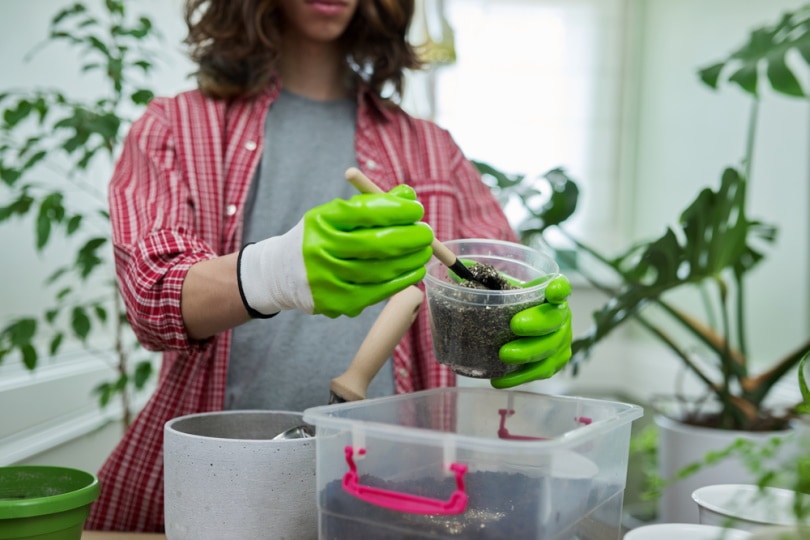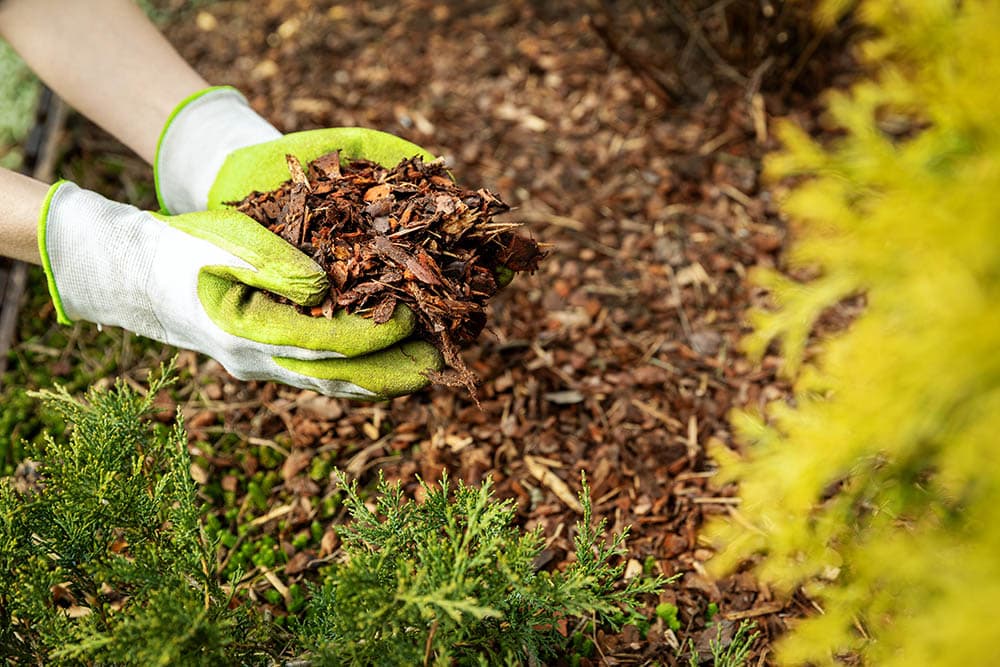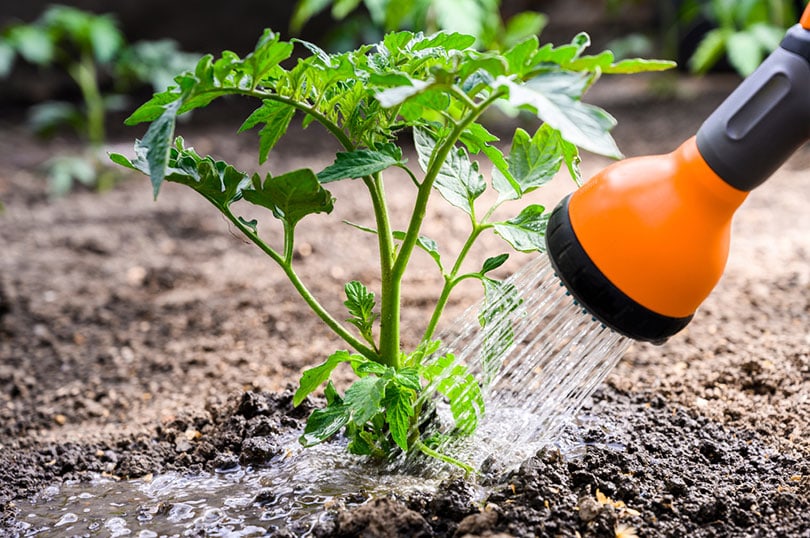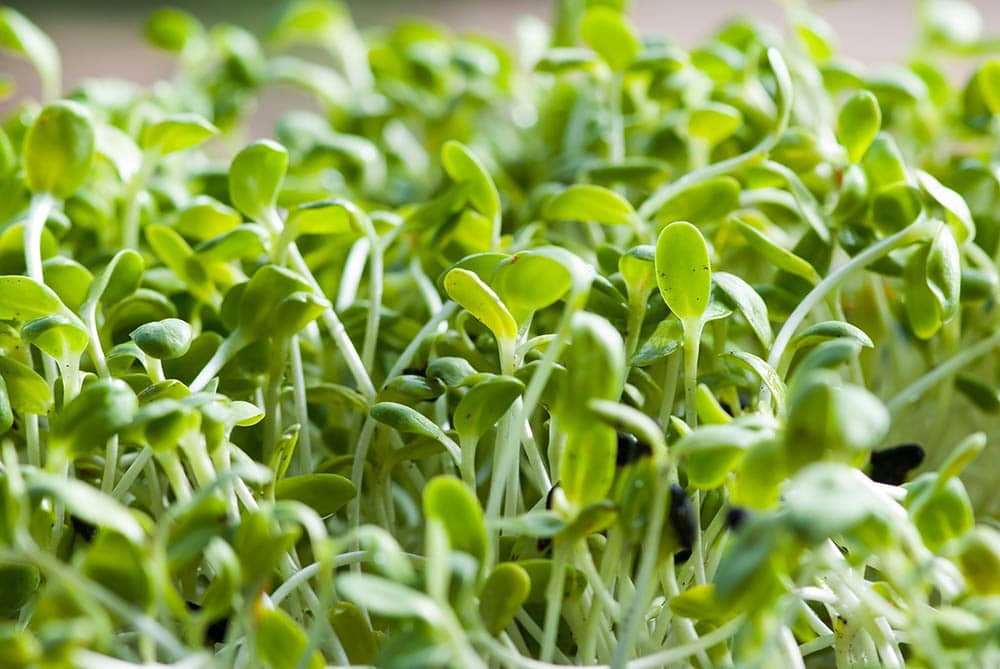How to Add Nitrogen to Soil: 10 Great Ideas
-
Chris Dinesen Rogers
- Last updated:

Many believe that oxygen is the most important component of the air we breathe. The reality is that nitrogen surpasses that element by nearly four times. That is not to dismiss the composition of the two chemicals, which jointly account for 99%. It may seem contrary, but plants can’t absorb nitrogen directly from the atmosphere no matter how abundant it is.
The reason for this is chemistry. The strengths of chemical bonds vary, requiring energy to split them to make nutrients available to the plants. Nitrogen typically exists in strong ones that they can’t break, thus, making it unavailable to them. The solution is to provide this nutrient in a usable form. It’s analogous to dying of thirst in a pool of water.
The 10 Great Ideas to Add Nitrogen to Soil
1. Planting Legumes as Cover Crops
The process of making this essential element available to plants is called nitrogen fixation. It takes unusable nitrogen to other chemical compounds, such as nitrites and, most importantly, nitrates. The breakdown of ammonia into this form is the nitrogen cycle. Bacteria support these reactions to ensure that photosynthesis and plant growth can occur.
Some plants can fix nitrogen from the atmosphere, so other flora on the same ground can benefit from its presence. It’s worth noting that some species are not desirable in other ways since many are invasive and aggressive, such as vetch (Vicia spp.). They often end up posing other environmental challenges.
2. Crop Rotation
Crop rotation improves soil health and chemistry on several fronts. It often involves using different plants season to season with nitrogen-fixing species like soybeans with those that can benefit from it, such as corn. It reduces the need to use fertilizers, which can save farmers money. It can also cut down on pesticide use if you rotate it seasonally with crops that are targets of particular pests.
Crop rotation is one effective method used in integrated pest management (IPM). The practice is brilliant because it doesn’t restrict the use of stronger measures like pesticides. Instead, it strikes a balance between the application and optimal effectiveness.
3. Mulching

Organic materials are a readily available source of nitrogen. These sources can break down quickly, making this nutrient accessible to plants. Mulching is an excellent example. Not only does it supply nitrogen, but it also curbs moisture loss with its protective covering. Of course, it’s all about balance and placement.
Too little won’t provide a sufficient means to retain moisture. Mulch placed in contact with the plants can increase the likelihood of fungal and bacterial diseases developing.
4. Manure
Manure provides the raw material going into the nitrogen cycle to make nitrates available as plant food. It is pre-processed through digestion, making it accessible quicker than other forms. Of course, odor and contamination are concerns if you use raw materials. It’s better and safer to use commercial products to circumvent some of these issues.
The downside of using manure is the propagation of undesirable plants, such as vetch or clover. It all depends on what the livestock have eaten.
5. Grass Clippings
Grass clippings are a double-edged sword. They can supply the necessary nitrogen in a readily available form. However, problems can sprout up if the clippings are too fine. On the one hand, it makes them easier to break down. Still, the size can cause it to clump, restricting airflow and setting up the perfect storm for fungal and bacterial diseases to develop.
The best thing about using grass clippings is that it can save you work. You can use a mower with a mulching blade to make it a no-brainer. After all, you have to mow anyway, so you might as well make an effort to do double-duty and fertilize, too.
6. Aquarium Water Changes

Water changes are a necessary part of aquarium maintenance. It reduces the build-up of nitrogen-based waste products before they can foul the tank water. Instead of pouring it down the drain, use the water in your garden to provide a valuable source of nitrogen and other nutrients. Your plants are picky about where you get them.
Nitrogen in this state is more readily available to plants. That makes it easier for them to absorb so that you can see the beneficial results quickly.
7. Compost Soil Amendments
Composting is an excellent way to reduce your household’s waste while making it useful for other purposes. Many organic materials break down and release their nutrients quickly in the right conditions. Overall, Americans have done well in reducing the amount of trash they generate per household. However, there’s always room for improvement. Composting provides it.
This process jumpstarts decomposition, making it easier for plants to use nitrogen and other materials. It’ll provide plenty of nutrition for beneficial soil bacteria and microorganisms.
8. Blood Meal
While it may sound repulsive, blood meal is an excellent way to boost the nitrogen content of your soil. It comes from slaughtered livestock, making it an effective way to use the entire animal sustainably. Its nitrogen content is about 13%. It is one of three main nutrients listed in a fertilizer’s guaranteed analysis. The other two are phosphorus and potassium.
Another benefit of using this product is that it may deter other pests you’ll likely have from visiting your garden, such as mice and squirrels. It’s worth noting that it may also attract meat-eating nuisance wildlife like raccoons.
9. Alfalfa Meal

If you’d prefer not to use blood meal, you can use alfalfa meal instead. This plant is a legume and contains plenty of nitrogen for your soil. It can fix nitrogen from the atmosphere, so it has an ample supply for its growth. It will provide the same benefits as our previous entry. However, it probably won’t do anything about your pest problem.
Alfalfa contains a growth hormone called triacontanol. It can provide a welcome boost to your garden, especially if you use it at the beginning of the season. Bear in mind that you should use either type of meal sparingly because of their concentrated form. Too much nitrogen is just as bad as too little.
10. Nitrogen-Rich Fertilizer
Of course, you can always cut to the chase and apply a commercial fertilizer. These products are labeled with the ratio of nitrogen, phosphorus, and potassium in them. To play it safe, you should consider testing your soil. The correct fertilizer depends on the current nutrient state and the plants you want to grow. It’s best to use these products at the beginning of the season and taper off near fall.
Signs of a Nitrogen Deficiency
Plants with a nitrogen deficiency show obvious signs that something is amiss. Common symptoms include:
- Small leaves
- Stunted growth
- Fewer or smaller flowers
- Failure to thrive
These conditions can also indicate other nutrient deficiencies. To be sure, that’s another reason why we recommend soil testing.
Final Thoughts
Nitrogen is a vital nutrient for plants. They can’t grow without it. Some species can tap into the readily available sources in the soil and air. Others need help with amendments that can satisfy their needs. Fortunately, you have many options for giving your garden or lawn the nutrients it needs for optimal growth.
Featured Image Credit: VH-studio, Shutterstock
Contents

